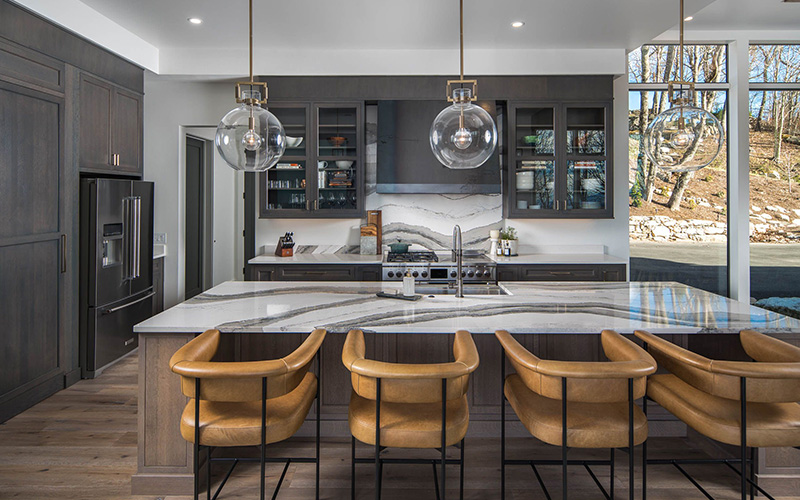What makes a home truly beautiful?
That’s the age-old question. In the wide world of residential design, it’s easy to be swept up by the latest fads—curved couches, oversized lighting, glossy accent walls—but we all know many of these features are fleeting. What catches the eye in a magazine or showroom now may not translate as well ten years down the line. And for many Carolina homeowners, that question is about more than just aesthetics—timeless custom home design is a matter of long-term value, lifestyle, and future-proof livability.
Here at VPC Builders, we’ve spent the last several decades helping clients navigate this exact dilemma. Whether you’re building a home from scratch or finally pulling the trigger on your long-awaited remodel, the pressure to keep up with design trends can be intense. While trends come and go, your home should stand the test of time, both in terms of its structure and style.
How to Style a Home That Won’t Feel Outdated in Five Years
You don’t need an expert to tell you what styles you’ll love—but it certainly helps. In this article, we’ll share our professional insights into designing a custom home that will feel fresh today and elegant for decades to come.
We’ll explore the core differences between what’s trendy and what’s timeless, highlighting the best design strategies as we go. Along the way, you’ll discover why Carolina homeowners come to VPC Builders first for timeless custom home design. Let’s dive in.
1. The Classic Architectural Elements: A Foundation for Timeless Style
The first step toward timeless home design begins with architecture. Long before furniture and finishes are selected, the shape and structure of your home should already feel cohesive, intentional, and enduring.
Certain architectural styles have proven their staying power over the years—think the clean symmetry of Colonial homes, the simplicity of Craftsman cabins, or the wide porches and pitched roofs of Southern Farmhouse designs. These styles resonate because they’re rooted in comfort, proportion, and practicality.
In the Carolinas, we often recommend blending traditional regional elements—exposed beams, natural stone, classic brickwork—with modern floor plans. Open-concept living, outdoor-indoor transitions, and functional space zoning (like home offices or multi-generational suites) can all be integrated within a timeless veneer.
Some guiding principles for classic design:
- Prioritize architectural details that reflect your personal style over the current buzz.
- When in doubt, strive for balanced and symmetrical layouts.
- Consider materials that age gracefully—brick, stone, and authentic hardwoods.
2. The Balancing Act: Modern Trends Vs. Longevity
Remember, incorporating trends is not a bad thing—but it’s best done with intention and restraint. The key is knowing where to invest in classic quality and where to experiment with fresh, novel personality.
For example, permanent fixtures like cabinetry, flooring, and countertops should lean toward neutral, elegant finishes that won’t date quickly. Elements like paint, hardware, or lighting fixtures, on the other hand, can be updated fairly easily as time goes by. This allows you to balance both your stylistic preferences and your long-term costs.
When working with residential clients, our team strives to identify their design anchors—those core visual elements around which everything else will orbit. From there, we can help them layer in more contemporary touches that evolve over time without competing with the home’s overall aesthetic.
Some key considerations:
- Embrace trends in low-commitment areas like wall color, backsplashes, or decor.
- Choose foundational colors and finishes that offer flexibility for future changes.
- Avoid “statement” pieces that will be difficult or expensive to replace down the line.
3. Sustainable Design Choices: Building for a Promising Future
Longevity is just as much about performance as it is about style. The durability of the materials, systems, and layouts you choose now will affect how well your home functions in the years to come. This is especially important if you plan to pass your dream home on to posterity.
Start with sustainability. Energy efficiency, low-maintenance materials, and eco-friendly construction practices are not only good for the environment—they’re a way to reduce future costs and extend your home’s usable life. In the Carolinas, where heat, humidity, and seasonal storms take a toll on even the sturdiest structures, sustainability often translates to durability.
As leading innovators in the industry, we incorporate high-efficiency HVAC systems, low-E windows, sustainable insulation, and smart technology integrations into our timeless custom home designs. In addition to future-proofing the home, these features allow for year-round comfort and can even lower utility costs.
Some pro tips for your sustainability efforts:
- Invest in energy-efficient appliances, lighting, and HVAC from the start.
- Use durable exterior cladding and roofing designed to weather local conditions.
- Design with maintenance in mind: fewer moving parts, more lasting materials.
The VPC Approach to Timeless Custom Home Design
Here’s the most important thing to remember: Timeless custom home design does not mean playing it safe. It means building with intention—combining time-tested principles with modern sensibilities to create a space that you will be excited about, both now and for years to come.
At VPC Builders, we specialize in the pursuit of styles that reflect the unique tastes of every client, all while providing the professional foundations for elegant, enduring design. Our team combines architectural expertise with interior vision and sustainable strategy to hand-craft homes for long-term beauty and functionality. So, whether you’re dreaming of a mountainside masterpiece or a modern Southern classic, you know who to call for a look that will last.
Let’s build something timeless together. Contact VPC Builders today.

